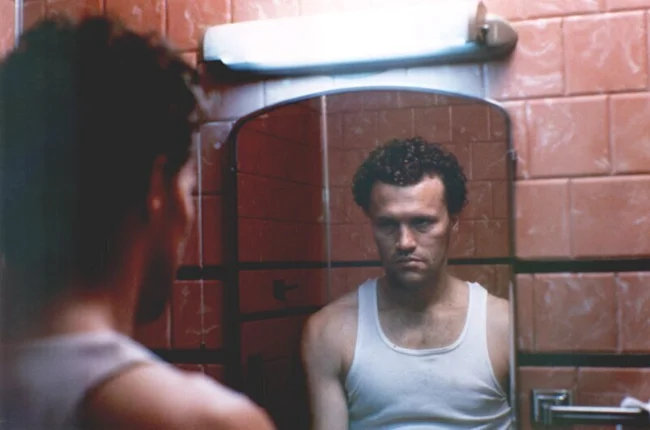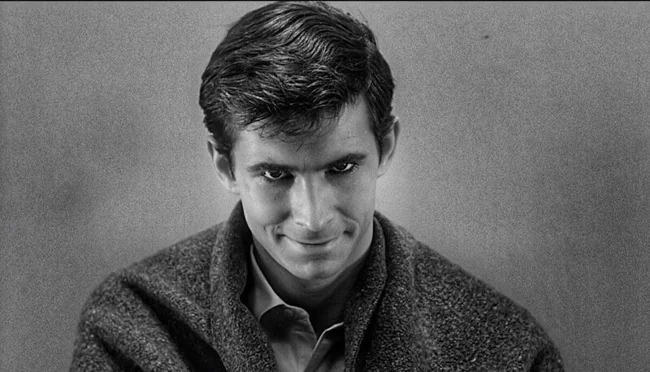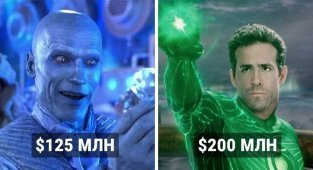Psychiatrists watched 400 films and named the most plausible psychopaths (13 photos)
Hannibal Lecter smokes on the sidelines. 
Belgian psychiatry professor Samuel Leistedt and his colleague Paul Linkowski watched 400 films over three years to find the most realistic portraits of psychopaths.
Leistedt says he even had to watch some of the films twice. And all in the name of science! At first, psychiatrists rejected obviously unrealistic films with ghosts or superpowers.
After screening, the researchers formed an impressive film library of 400 years, filmed from 1915 to 2010, from which psychiatrists identified 126 psychopathic characters: 105 men and 21 women. A team of 10 forensic psychiatrists and film critics also participated in reviewing and assessing the diagnoses. So the sample can be considered quite representative. 
Often, many people mistakenly use the word “psychopath” as a synonym for “psycho,” meaning by this word a hysterical person who is easily enraged, or a person who is capable of cruelty and other crazy acts. But this is fundamentally wrong. A psychopath is the complete opposite of a psychopath - he may be capable of crazy things, but he is always cold-blooded.
Samuel Leistedt, who has interviewed and diagnosed many psychopaths during his career, says they have no empathy for others: “They are cold-blooded,” says the psychiatrist. “They have no emotion.” 
However, psychopaths are different. When making diagnoses, the researchers used the classification described by the famous psychiatrist Benjamin Karpman and forensic psychologist Hugo Hervé.
Here she is:
Primary versus secondary psychopathy: Primary psychopaths are born with a lack of empathy, which may indicate a genetic basis for the disorder. They are characterized by callousness and a lack of guilt, which is why the primary psychopathy is often called “successful” psychopathy. Primary psychopathy is more common among business representatives, heads of organizations, politicians and, in general, those whose work requires access to power. In secondary psychopaths, the syndrome is caused by the environment, possibly childhood abuse. They tend to have more fears and anxiety, and are characterized by a lack of control over their actions and risky behavior. It is these psychopaths who, as a rule, end up in prison.
Classic/idiopathic: low levels of fear or anxiety; complete lack of empathy or remorse; outward calm, but capable of extreme cruelty.
Manipulative: uses victims through charm, seduction, and deception; the most common crimes involve fraud and breach of trust; wears a “mask” extremely skillfully.
Pseudopsychopath: Has some characteristics of psychopathy, but primarily suffers from other disorders such as psychosis; prone to outbursts of anger.
Macho: intimidates with threats, uses violence; impulsive, often loses patience; it is relatively easy to identify; most often end up in prison for drug-related or assault-related crimes.
Top 3 most realistic but fictional psychopaths 
The first place is taken by the assassin Anton Chigurh (Javier Bardem), terrifying with his demonic composure, from the film “No Country for Old Men.” 
Leistedt says Anton Chigurh is his favorite portrait of a psychopath. He just does his job - kills people, and sleeps peacefully. The psychiatrist says he has met several such people in India. Chigurh reminds him of two professional killers with whom Leistedt had the opportunity to talk.
Diagnosis: primary, classic/idiopathic psychopath
“They were cool, smart, no guilt, no anxiety, no depression,” the psychiatrist shared.
2. "M" (1931). Character Hans Beckert, played by Peter Lorre 
Hans Beckert is a maniac who kills children. This character did not correspond to the then ideas about psychopaths. Outwardly he was an absolutely normal person, but inside he was overwhelmed by the desire to kill.
It is "a significantly more realistic portrayal of what is ultimately known today as a violent sexual predator, most likely suffering from psychosis," Leistedt and Linkowski write. 
Diagnosis: secondary, pseudopsychopath, additionally diagnosed with psychosis.
3. “Henry: Portrait of a Serial Killer” (1990). Henry Lee Lucas played by Michael Rooker 
The main theme of the film about a guy who loves to find new ways to kill people is the chaos and instability of a psychopath's life, say researchers.
Henry, like all psychopaths, lacks empathy and insight, and the film well illustrates his emotional poverty and inability to plan for the future.
Diagnosis: primary, classic/idiopathic psychopath. 
Top 3 most unrealistic psychopaths shown in movies 
Tommy Udo from the movie Kiss of Death, played by Richard Widmark, is an excellent example of an immature portrayal of a person who suffers from psychopathy. The character Tommy Udo became famous for his creepy giggle. But psychopaths, as we know, do not giggle or show any emotions; they are outwardly calm, like crocodiles.
2. "Psycho" (1960). Norman Bates played by Anthony Perkins 
Unfortunately, the great Hitchcock failed to show a real psychopath. It all started in 1957, when the maniac Ed Gin was arrested, who not only killed, but also ate and practiced necrophilia with his victims.
Ed Gein inspired many directors to create horror films that featured an underdog with a sexual motivation to kill.
So in the film “Psycho”, although Norman Bates’ behavior is closely related to psychopathy, the real maniac Ed Gean was most likely psychotic, that is, divorced from reality.
Psychosis is a completely different diagnosis that has little in common with psychopathy, as it is often accompanied by delusions and hallucinations.
"The Silence of the Lambs" (1991). Hannibal Lecter played by Anthony Hopkins 
Yes, Anthony Hopkins did his best, showing a man who is frightening to the point of goosebumps and at the same time attracting with his intelligence. However, cunning and downright superhuman intelligence are not found not only in psychopaths, but also simply in nature. 
Lecter, the researchers write, is an excellent example of an elite psychopath who became popular in the 1980s and 1990s.
Hannibal Lecter is a calm, reserved man of sophisticated tastes and manners, with an exceptional ego and skill in murder, while having an almost catlike demeanor.
“Such traits, especially in aggregate, are usually absent in real psychopaths,” psychiatrists are confident.


